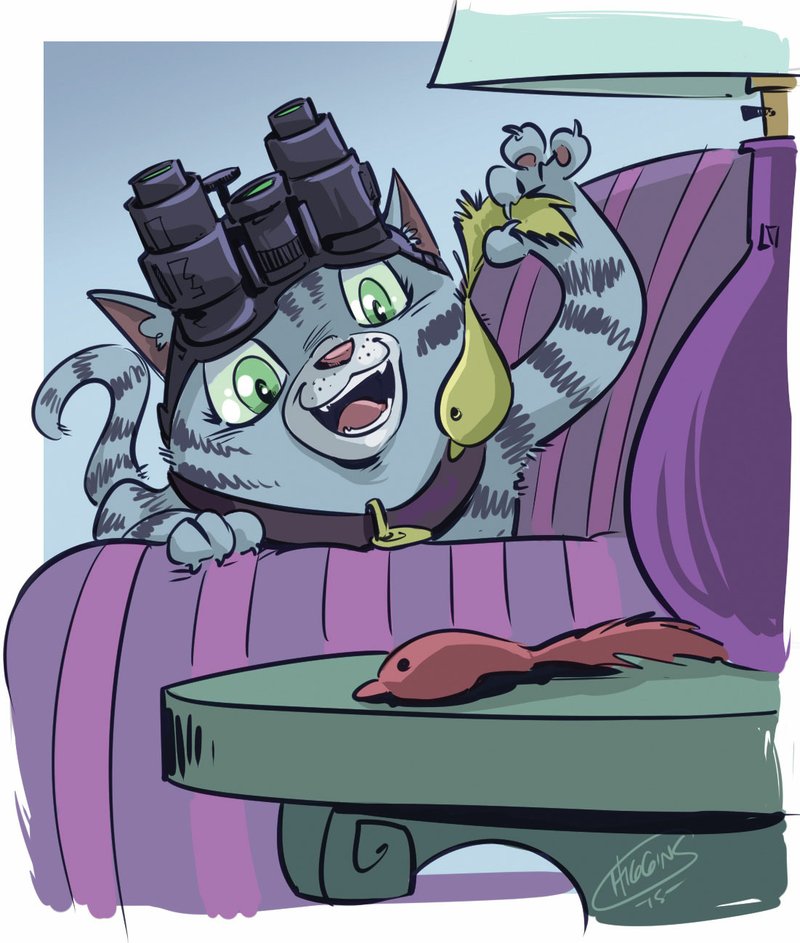I have two questions about cats. First, why do their eyes shine green in the dark? And second, can they see colors? I wonder about the colors because my cat Abby (a gray striped tabby) has a yellow catnip bird toy and the same one in red. She seems to like the yellow one better than the red one.
The characteristic green shine you see whenever light hits a cat’s eyes in the dark represents a kind of vision efficiency that helps a cat hunt prey, anthrozoologist John Bradshaw says in Cat Sense: How the New Feline Science Can Make You a Better Friend.
Bradshaw, a professor at the University of Bristol in England whose specialty is interactions between humans and animals, analyzes cat behavior and physical characteristics by looking upon domestic cats as still being essentially wild animals. In his book, he explains that, unlike dogs, cats haven’t undergone a lot of genetic changes because humans haven’t bred them for any specific purpose other than appearance (show cats, for example). When it comes to eyesight, the wild ancestors of our pet cats needed to be able to spend more time hunting, so they developed exceptional night vision. They didn’t, however, develop the ability to recognize or distinguish among a range of colors.
A cat’s eyes are quite large in relation to the size of its head, Bradshaw says, noting that they are actually about the same size as a human’s eyes. In darkness, a cat’s pupils expand to about three times the area that ours do. When light hits a cat’s eye, it’s reflected off the tapetum layer behind the retina; from the tapetum, light bounces back through the retina, strikes a receptor cell from behind and enhances the eye’s sensitivity by 40 percent. All that bouncing around results in eyes that glow green in the dark.
Color vision is related to the ratio of different types of receptor cells that respond to the radiation of light. These are divided into rods and cones — rods for black-and-white vision in dim light and cones for color in bright light. Humans also have rods and cones. A multitude of cones allows us to see a wide array of colors, but a cat’s eyes have more rods than cones. Not only does a cat have fewer cones than a human, but it has only two types of cones. That means a cat can see only two colors — blue and yellow, which may explain why your cat prefers the yellow bird.
Bradshaw says that the type of color vision cats possess is what would be called “red-green color blindness” in humans. To a cat, green and red may appear to be gray. Because a cat can’t distinguish colors, he says, they probably aren’t very important to them. Cats are more interested in brightness, pattern, shape and size than in color.
What cats lack in color vision, Bradshaw says, they make up in ability to detect motion. When the cat’s brain processes signals from its eyes, it doesn’t simply construct snapshots or still pictures but actually figures out what has changed between one snapshot and the next. The visual cortex area of the cat’s brain compares the images it collects about 60 times per second.
While comparing images, the cat’s brain also analyzes movements in them by direction — up, down, left, right, diagonal — and zeros in on the things that are moving most quickly. That’s why a cat is able to pounce on a mouse or a laser light beam seemingly almost before they move. Just because we don’t see something move doesn’t mean a cat doesn’t. A cat misses little when it comes to motion and light — and sound, but that’s another column.
